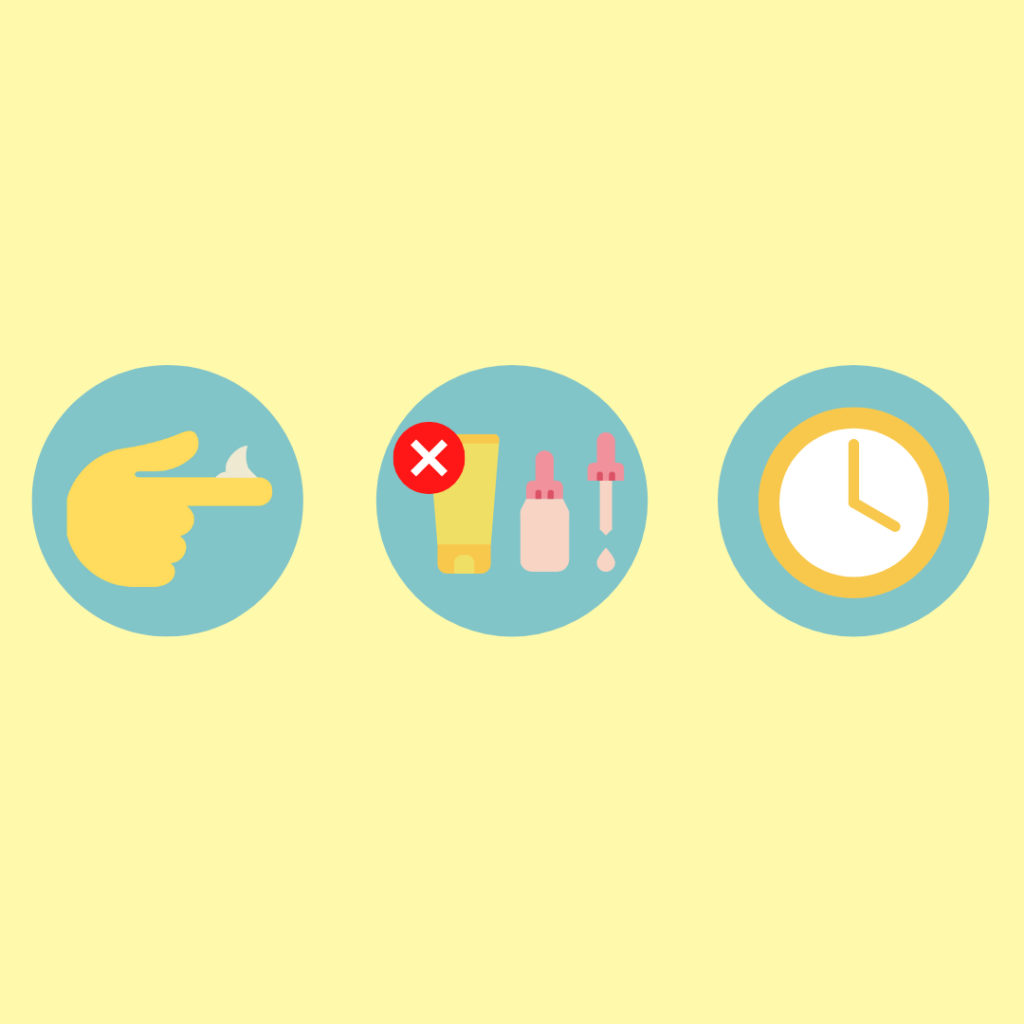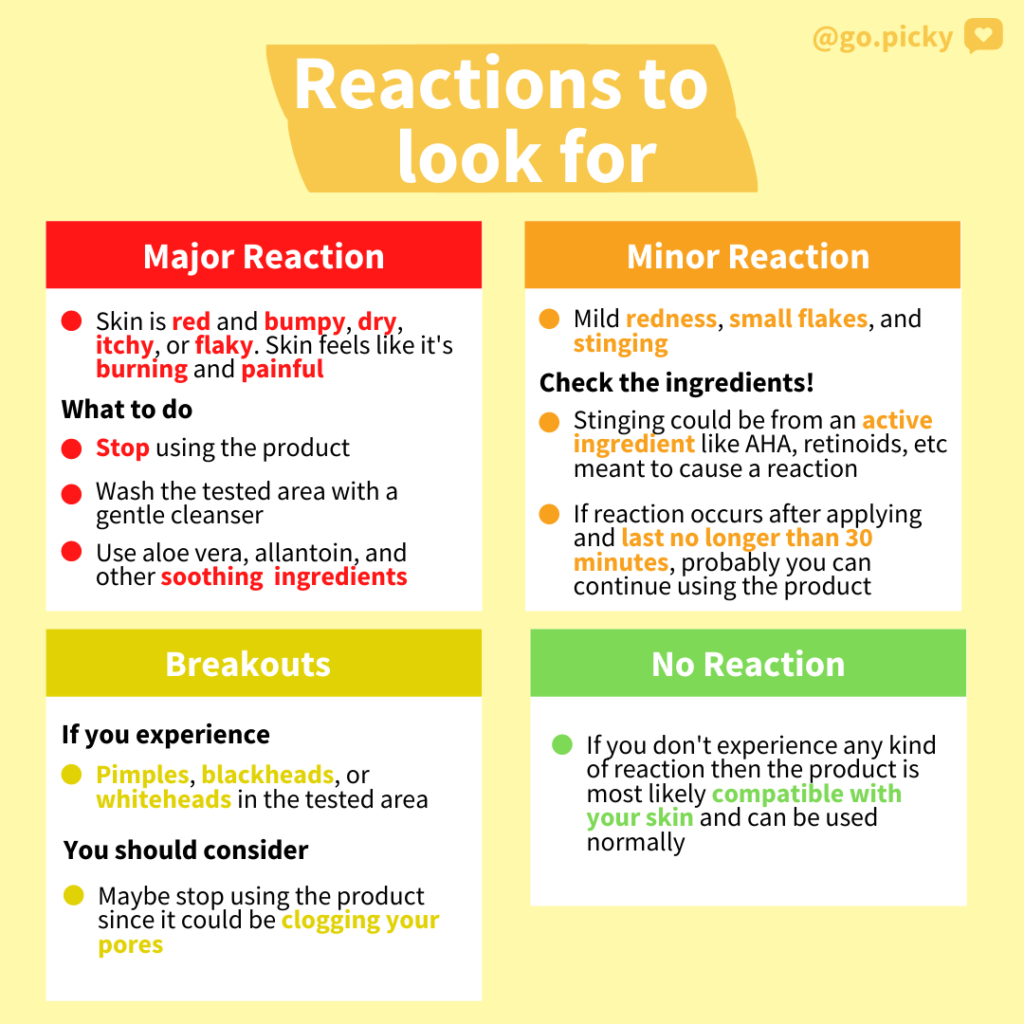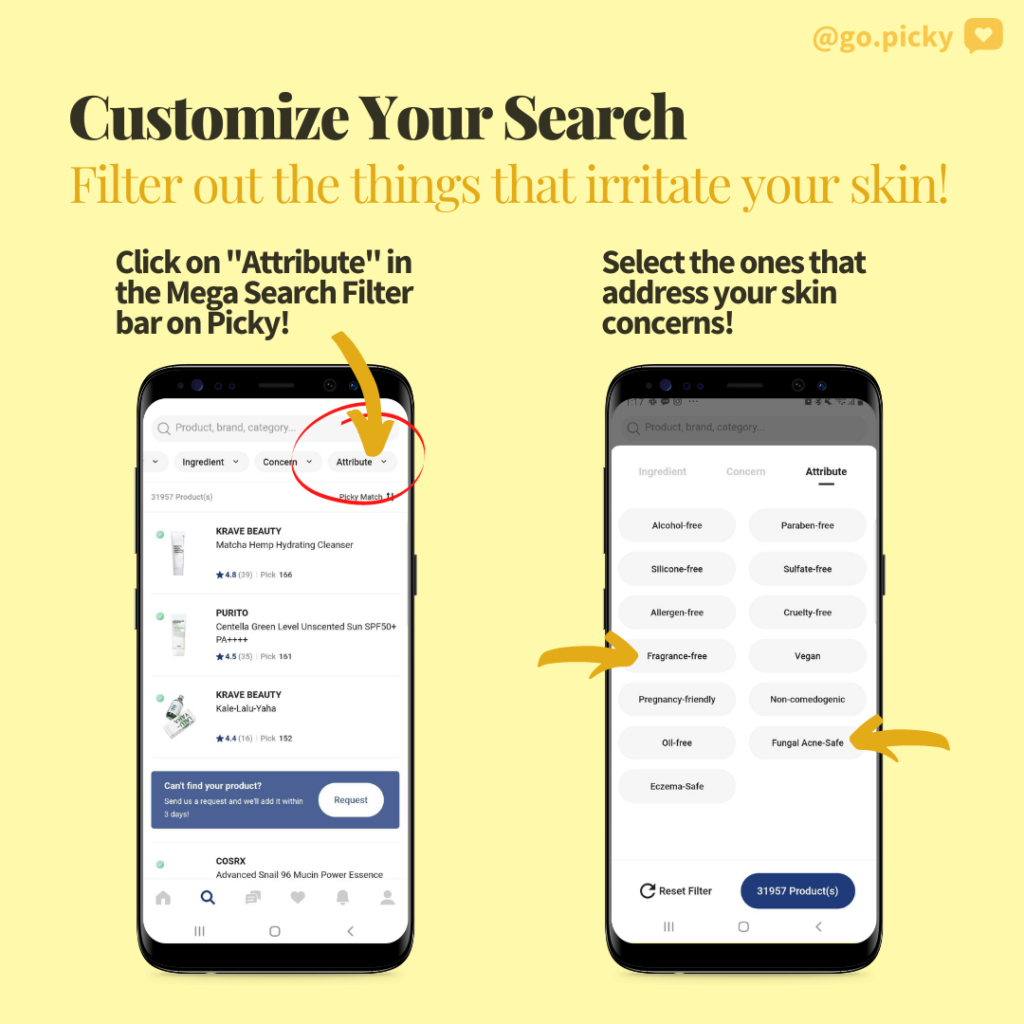Everyone’s skin is unique! A product that causes you breakouts could be another person’s holy grail! But how can we be sure a product won’t irritate our skin? Easy! With a patch test. Keep reading to see how you can safely test and try out new products.

What is a Patch Test?
Did you know? Just because something is labeled as “hypoallergenic,” “dermatologist tested,” “gentle formula,” or many other promising claims does not guarantee that the product will be kind or gentle to your skin! That’s why a patch test is crucial!
A patch test is a method for detecting whether a substance can cause an allergic reaction through contact. This diagnostic tool was created all the way back in the nineteenth century, and still used today worldwide to investigate for contact dermatitis! Patch tests are usually done by applying a product to the upper back and waiting around 48 hours for a reaction.
Skincare patch testing is a simple way of predicting whether a product will initiate a negative reaction on your skin. All you need to do is apply a small amount to a certain area. But there’s a few more things to keep in mind, so continue on to see how you can do your own patch test!
How To Do a Patch Test

You can take the following as a general rule of thumb for patch tests, but if a more specific test is needed we have steps for that as well! Start by applying a small amount of product to a certain area of skin. Only one product at a time, don’t overwhelm the area! Make sure the area of skin is large enough so if there is a reaction, you can see it. But not too large that it will be hard to hide or treat without causing more damage. Give it time to react!
Patch Test for Allergic Reaction
Apply the product to a small area behind the ear, side of the neck, or on the underside of your jaw. Don’t put any other product on this area so you can properly test. Wait for 24-72 hours to see if there is any allergic reaction taking place. Individual results can vary, but it’s highly recommended that you perform a patch test for at least 2-3 days before you begin regularly applying your other skincare products.
Patch Test for Skin Irritation
If you want to test whether a product will irritate your skin, you need to check with the areas where your skin is most sensitive. Everyone’s skin is different, so you have to determine those sensitive spots on your own! It can vary from person to person, but it’s recommended to perform a patch test 24-72 hours before regularly applying other skincare products.
Patch Test for Breakouts
This patch test is a little bit different. The area for testing needs to be an area more prone to acne, usually the cheek or chin. Only apply a pea-sized amount of product daily to the same area for a week. This way you can observe how your skin will react.
What Reactions To Look For

Major Reactions
If you experience: Skin looking red and bumpy, dry, itchy or flaky. Skin might also feel like it’s burning and/or painful.
You should: Discontinue using the product. Wash the tested area immediately with a gentle cleanser! Treat the area with a soothing product that includes aloe vera, centella asiatica, ceramides, bisabolol, or allantoin
Mild Reactions
If you experience: Mild redness and small flakes or stinging.
You should: Check the ingredients because stinging can mean one of two things: First, your skin isn’t compatible with the product, so you should stop using it ASAP. Second, you’re using a product that contains actives that are meant to cause a reaction. This is pretty common with ingredients such as AHA, BHA, retinol, vitamin C or other low pH ingredients. If the reaction is short-lived, occurs immediately after application and last no longer than 30 minutes, probably you can continue using the product. If the reaction worsens over time, discontinue using the product.
Breakouts
If you experience: Pimples, blackheads or whiteheads in the tested area.
You should: Maybe discontinue since it may be creating clogged pores.
No Reaction At All
If you have no reaction to the tested product then that means the product is compatible with your skin and can be used normally!
Skincare is all about trial and error, so keep these methods and reactions in mind for your future skincare trials! Already know what irritates your skin, but not sure what products are safe to use? Use the ‘Attribute’ function in the Picky app to find products that suit your skin’s needs! “Allergen-free,” “fragrance-free,” “fungal acne-safe,” and more.
Head to the Picky app now and customize your skincare journey. Don’t forget to also follow us on Instagram and check our blog for more skincare science content!




















5 Responses
woah..this is soo helpful and complete article for patch test as I’m always confused abt this😂😅 thank youuuu💗
Just the perfect timing to have a guide because new products have been added to my routine! Thank you so much!
Very helpful! Thanks Picky! I have always wondered how to properly do a patch test. I did not know there were different types of reactions to look out for… 😅
Very good blog, thanks for posting
Fantastic site, thanks a million for the contribution